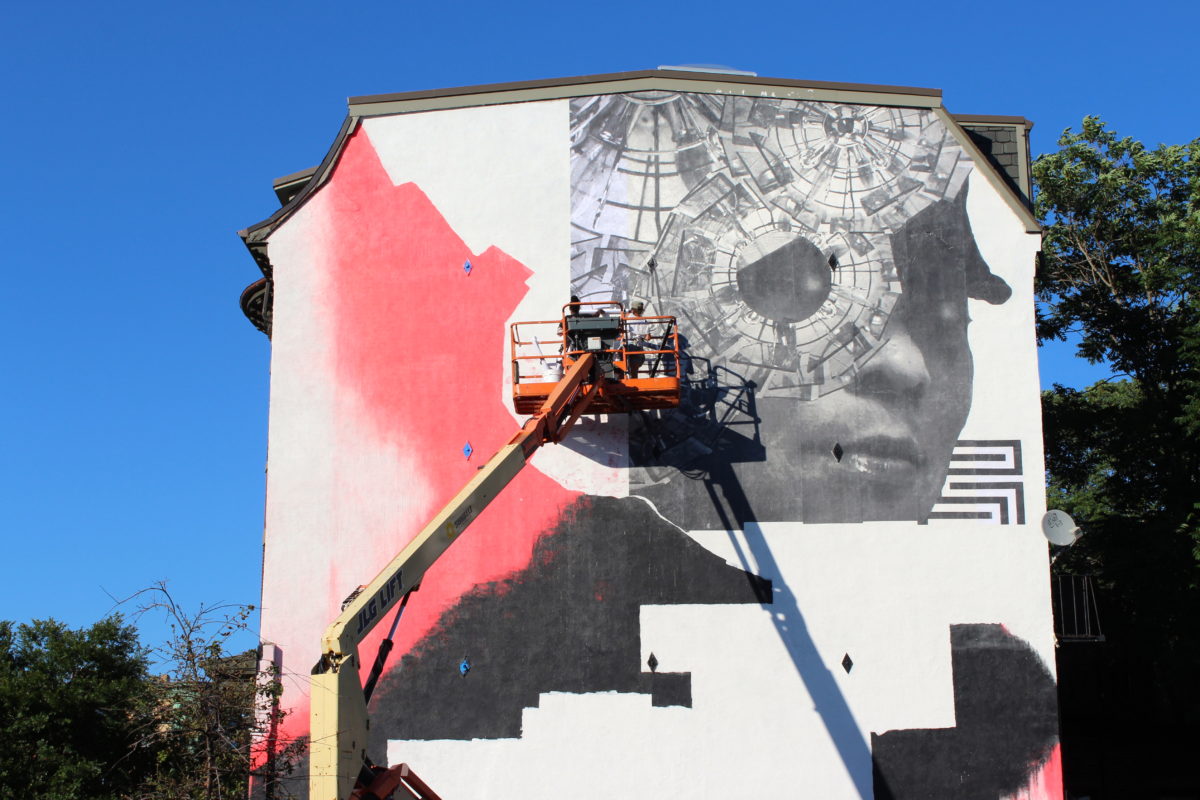
Last week artist and activist Ann Lewis began work on “See Her,” a public mural at 808 Tremont Street in Boston’s South End. The temporary mural, up until October 2018, is being created in partnership with the women of the McGrath House, a reentry facility where incarcerated women serve the final six months of their prison sentences. In this way, the creation of the mural serves as both a rehabilitation tool and a commentary on our culture of incarceration.
Lewis and her team constructed the 42-foot-by-38-foot mural using paint and photographic imagery aimed at depicting the inherent strength and potential of women. Lewis says she uses photographs because she’s not much of a portrait painter. “I like being able to use the likeness of a person to honor who they are,” she says. The dominant image is a face, half shielded by collage. It’s the face of McGrath House resident Laura Minot. Lewis says Minot struck her right away as an outgoing, entrepreneurial spirit. As for shielding her face, it wasn’t just for Minot’s privacy. “I wanted to simulate the idea of how hidden people are in the criminal justice system, and how easy it is to ignore them,” Lewis says.
The mural serves as the first piece of artwork in the non-profit organization Now + There’s Year of the Woman programming. Now + There Executive Director Kate Gilbert says, “When the election results came in I felt even more compelled to exhibit women artists, artists that use their work to lift other women up.” Two other female creatives will follow Lewis later this year, including Boston’s own Elisa Hamilton.
Gilbert says the public art process requires a significant amount of trust in everyone involved. Lewis came to her with a concept, but it wasn’t until the artist hosted workshops with the McGrath residents that a formal design for the mural was drawn up. Lewis consolidated the collage elements favored in the workshop to make the finished piece. Below Minot’s jaw zig-zags a climbing wall of black and white pattern that looks like a maze. A clear nod to the convoluted justice system, the eye-reeling pattern softens next to the bright red patches of color that catch the viewer’s eyes.
Lewis hopes by the end of the project people will be less judgmental of those involved in the criminal justice system. “There are a lot of people assuming that because they went to prison, they’re bad people,” she says. “I think ‘See Her’ will make people realize that these people are part of their communities.”
See the full article in The Bay State Banner.